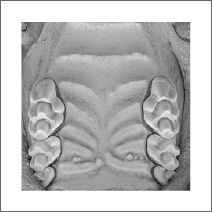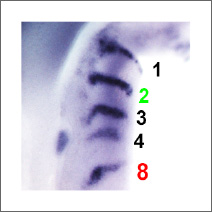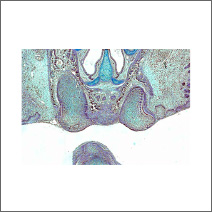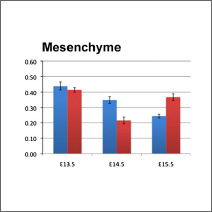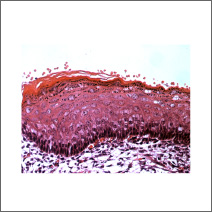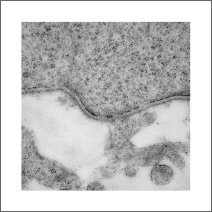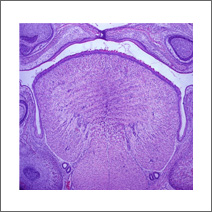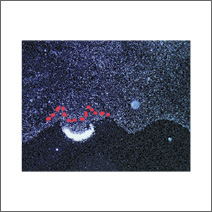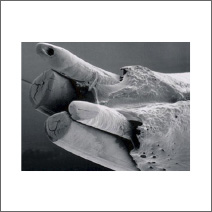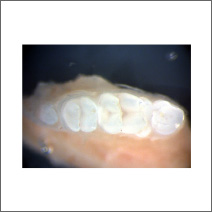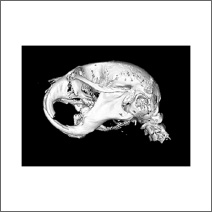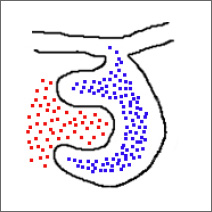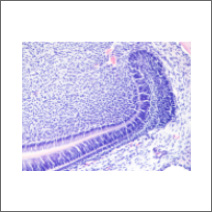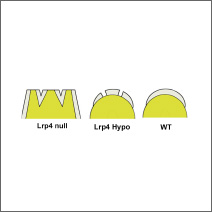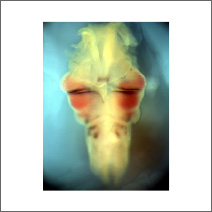English
Molecular mechanisms involved in organogenesis (eg., teeth, tongue, mandibles, eyelids, lips, palate, eyes, palatal rugae, and the face)
Each organ develops into a particular shape and size at the appropriate location, with a specific number of each. For example, there are no feet on the face, no ears on the stomach, and so on. Teeth develop in a certain order and number. Hence, we aim to elucidate how the number, shape, size, location, and type of organs are determined?
※selected publication 写真をクリックすると、リンク先へ
Approaches for understanding congenital diseases
Ectodermal dysplasia
Ectodermal dysplasia is a congenital disorder that causes abnormalities in organs derived from the ectoderm, such as teeth, mammary glands, sweat glands, nails, and hair. We are working on elucidating the mechanisms underlying the onset of this disease.
※selected publication 写真をクリックすると、リンク先へ
Ciliopathy
Primary cilia have long been considered as organelles that have lost their original function during evolution. However, in recent years, it has become clear that they play critical roles including regulation of signaling pathways. Dysfunction of the primary cilia causes a disease called ciliopathy, which is a wide spectrum of human diseases. We are working on elucidating the function of the primary cilia in order to help understand ciliopathy.
※selected publication 写真をクリックすると、リンク先へ
Others
※selected publication 写真をクリックすると、リンク先へ
Molecular mechanisms involved in stem cell regulation
Mouse incisors grow continuously throughout their lifetimes, which is due to the presence of stem cells. We are working on elucidating the molecular mechanism involved in regulating stem cells using mouse incisors.
Approaches for understanding evolution
Each organ has acquired its current function and morphology through evolution. The phenomena observed in developmental processes (both at the molecular and morphological levels) are thought to be also the result of evolutionary processes. Therefore, it is extremely important in developmental biology to consider evolution. How have the various organs in our body evolved? Can we reverse evolutionary processes by manipulating genes? We are working on clarifying such questions.
※selected publication 写真をクリックすると、リンク先へ
DNA damage and senescence in embryonic tissue
It is believed that the embryo is extremely stable in utero. However, in recent years, it has become clear that DNA damage and senescence seem to occur both in embryos and the adult body. We are working to understand why these phenomena occur in embryos.
